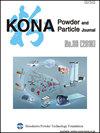薄膜冷冻技术的发展及其在改善干粉气溶胶生物制剂输送中的应用
IF 3.2
4区 材料科学
Q3 ENGINEERING, CHEMICAL
引用次数: 16
摘要
虽然药物的液体配方是常见的做法,但粉末具有增强的稳定性,避免冷链,较低的剂量要求和更方便的管理。这对蛋白质来说尤其重要,因为它们既昂贵又复杂。粉末还具有改善的肺输送气溶胶特性。粉末配方的传统技术包括喷雾干燥、货架冷冻干燥、喷雾冷冻干燥和喷雾冷冻成液体,但由于粉末性能不理想,它们生产的粉末具有较差的气溶胶性能和/或活性。薄膜冷冻(TFF)是一种新的低温技术,可以设计出具有优异气溶胶性能和稳定性的高多孔、脆性粉末基质。在这里,我们将TFF与其他低温技术进行比较。讨论了TFF粉末的物理性质,如形态、吸湿性、稳定性、溶解度和溶解性以及气溶胶性质。此外,还分析了固体含量、载药量、溶剂体系、赋形剂、给药装置等对TFF制备的干粉的物理和气溶胶性能有显著影响的因素。最后,我们提供证据支持使用TFF制备干粉配方的蛋白基药物的适用性,使其无冷链储存以及有效的肺输送。本文章由计算机程序翻译,如有差异,请以英文原文为准。
The Development of Thin-film Freezing and Its Application to Improve Delivery of Biologics as Dry Powder Aerosols
While the formulation of pharmaceuticals as liquids is common practice, powders are associated with enhanced stability, avoidance of the cold chain, lower dosing requirements, and more convenient administration. These are particularly critical for proteins, as they are expensive and complicated to manufacture. Powders also have improved aerosol properties for pulmonary delivery. Conventional techniques for formulating powders include spray-drying, shelf freeze-drying, spray freeze-drying, and spray freezing into liquid, but they produce powders with poor aerosol performance and/or activity due to suboptimal powder properties. Thin-film freezing (TFF) is a new cryogenic technique that can engineer highly porous, brittle, powder matrices with excellent aerosol performance properties and stability. Herein, we describe TFF in comparison to other cryogenic techniques. Physical properties of TFF powders such as morphology, moisture sorption, stability, solubility, and dissolution, as well as aerosol properties are discussed. In addition, factors that significantly affect the physical and aerosol properties of dry powders prepared by TFF, such as solids content, drug loading, solvent system, excipient, and dry powder delivery device, are analyzed. Finally, we provide evidence supporting the applicability of using TFF to prepare dry powder formulations of protein-based pharmaceuticals, enabling their cold chain-free storage as well as efficient pulmonary delivery.
求助全文
通过发布文献求助,成功后即可免费获取论文全文。
去求助
来源期刊

KONA Powder and Particle Journal
工程技术-材料科学:综合
CiteScore
8.40
自引率
4.90%
发文量
35
审稿时长
>12 weeks
期刊介绍:
KONA publishes papers in the broad field of powder science and technology, ranging from fundamental principles to practical applications. Papers describing technological experience and critical reviews of existing knowledge in special areas are also welcome.
 求助内容:
求助内容: 应助结果提醒方式:
应助结果提醒方式:


